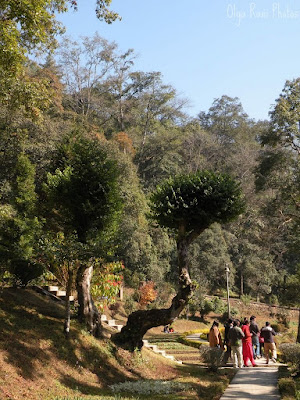About spiders and their webs
As a child I really did not like cobwebs. Going with my father in the woods for mushrooms, I didn’t worry about meeting a snake or a wild animal out there, but I was scared of spiders’ webs. You walk peacefully through the woods, and suddenly you feel a touch of something sticky, unpleasant and frightening on your face. Imagination immediately draws a terrible and horrible spider that will now jump on you and ... And what could such a small spider do to, though small, but compared with it, a big girl?
The girl grew up and, though still doesn’t like spiders, especially the large ones, she is no longer afraid of their webs. On the contrary, a variety of designs and styles of the web, its strength and lightness at the same time, fascinates and amazes.
Spiders build an enormous variety of webs, all designed to capture their prey. The best known and most complex are the symmetrical orb webs. A typical web may have 20 m of silk, meeting at 1000 junctions. It weighs less than 0.5 mg, yet the spider it supports is 4000 times as heavy.
Hammock webs can reach up to 30 cm across. Any insect that blunders into the hammock or flies just above is tripped up by a maze of threads. The spider which has been waiting underneath grabs the insect from below and pulls it through the hammock, wrapping it in silk.
The web-casting spider spins a net the size of a postage stamp. The spider holds this cradle between its front legs. It then hangs upside down from a leaf and when a moth flutters by, the spider lurches forward and stretches the web taut, netting its victim.
The silk of a golden orb spider is the strongest natural fibre known; it can also stretch by a third before snapping.
Godavari Botanical Garden
This is a really pleasant spot where you can enjoy a walk or organize picnics. Though it seemed to me a bit neglected, maybe because it is winter now. It was opened in 1962 and nowadays there are approximately 500 specimens of flowering and non-flowering plants, including some 66 different species of fern, 115 orchids, 77 cacti and succulents, and about 200 trees and shrubs, some of them endangered or rare.
Fresh air of the Himalayas?
Namaste!
Anyone who first arrives in Kathmandu immediately will notice how polluted the air is here. It is just impossible not to notice: black smoke from the passing cars penetrates into your nose and mouth and makes your breathing hard. There are a lot of old cars, plus no one cares to control the CO level, plus the quality of diesel and gasoline is poor - all of these further increases air pollution. In winter, when long load shedding is a practice, all factories, shops, cinemas and the citizens at home are forced to use generators, the emissions from which do not improve the ecological situation in the city. Also smoke, ash particles and brick dust from various industries such as cement, brick kiln, stone grinding and diesel plants are directly released into the atmosphere... That's how we live…The most interesting temples of Bangkok
The temple of Reclining Buddha. This is the largest and oldest temple of Bangkok. Besides, it houses the largest image of the Buddha. The highly impressive gold plated Buddha is 46 m long and 15 m high illustrates the passing of the Buddha into nirvana. The feet and the eyes are engraved with mothe of pearl decoration and the feet also show the 108 auspicious characteristics of the true Buddha.
Singapore's zoo
Singapore’s Zoological Gardens started life after the Second World War as a menagerie of abandoned British military pets. By the early 1970s it had evolved into a proper zoo.
Deities of Koh Samui
Thailand is often called “The land of Smiles”. The biggest smile you’ll come across on Koh Samui isn’t that of a person but the statue of a deity the Maitreya Buddha. It’s hard to look at him and frown. He sits on his own lotus flower shaped island that just out into shallow temple lake. He’s a huge white figure at the end of a very ornate bridge that leads you right to his feet. The Maithreya Buddha is worshipped for wealth and happiness, the wealth depicted by the large bag he holds in his right hand while the happiness part is pretty much self-explanatory when you look at his huge grinning face.
Exotic orchids
Namaste!
Orchids ... it is impossible not to admire them, not to be delighted with their beauty and elegance. These flowers are like mysterious creatures of the distant tropics, as exotic as their homeland. According to the legend of New Zealand’s aborigines, orchids are the fragments of the crashed rainbow, and perhaps that is why they are so different and varied in colors: there are more than 20,000 currently accepted species, plus about 100 000 artificial hybrids. And even on the same plant there are no two exactly the same flowers.
Subscribe to:
Comments (Atom)








